Color-Space-Based Visual-MIMO for V2X Communication
†
Abstract
:1. Introduction
2. Experimental Section
2.1. Visual-MIMO with Color-Space-Based Modulation
2.2. Mobile Networking through Visual-MIMO
3. Results and Discussion
4. Conclusions
Supplementary Materials
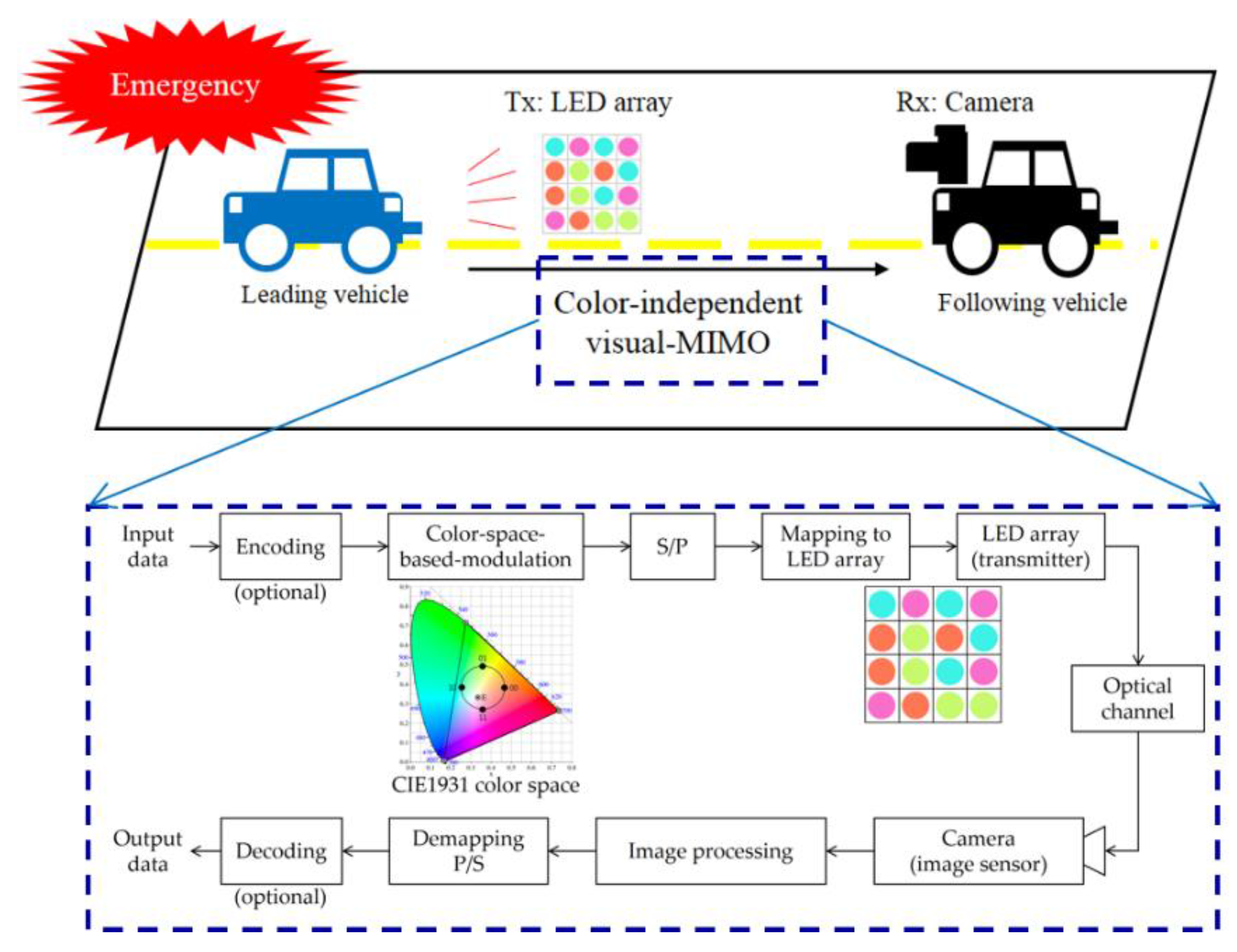
Acknowledgments
Author Contributions
Conflicts of Interest
Abbreviations
| BER | bit error rate |
| CMOS | complementary metal-oxide semiconductor |
| CSK | color shift keying |
| GCM | generalized color modulation |
| ISI | inter-symbol-interference |
| LEA | light emitting array |
| LOS | line-of-sight |
| MIMO | multiple-input multiple-output |
| PD | photo detector |
| QAM | quadrature amplitude modulation |
| RF | radio frequency |
| ROI | region of interest |
| SER | symbol error rate |
| SNR | signal-to-noise ratio |
| V2V | vehicle-to-vehicle |
| V2X | vehicle-to-everything |
| VANETs | vehicular ad hoc networks |
| VLC | visible light communication |
References
- Ashokz, A.; Gruteserz, M.; Mandayamz, N.; Dana, K. Characterizing Multiplexing and Diversity in Visual MIMO. In Proceedings of the IEEE 45th Annual Conference on Information Sciences and Systems, Baltimore, MD, USA, 23–25 March 2011.
- Kim, J.-E.; Kim, J.-W.; Park, Y.; Kim, K.-D. Applicability of Color-independent Visual-MIMO for V2X Communication. In Proceedings of the IEEE 7th International Conference on Ubiquitous and Future Networks, Sapporo, Japan, 7–10 July 2015.
- Takai, I.; Harada, T.; Andoh, M.; Yasutomi, K.; Kagawa, K.; Kawahito, S. Optical Vehicle-to-Vehicle Communication System Using LED Transmitter and Camera Receiver. IEEE Photonics J. 2014, 6. [Google Scholar] [CrossRef]
- IEEE Standard for Local and Metropolitan Area Networks—Part 15.7: Short-Range Wireless Optical Communication Using Visible Light. Available online: http://ieeexplore.ieee.org/servlet/opac?punumber=6016193 (accessed on 11 February 2016).
- Yokoi, A. Color multiplex coding for VLC. IEEE P802.15 Working Group for Wireless Personal Area Networks, 7 November 2008. Available online: https://mentor.ieee.org/802.15/dcn/08/15-08-0743-01-0vlc-color-multiplex-coding-for-vlc.pdf (accessed on 11 February 2016).
- Das, P.; Kim, B.-Y.; Park, Y.; Kim, K.-D. A New Color Space Based Constellation Diagram and Modulation Scheme for Color Independent VLC. Adv. Electr. Comput. Eng. 2012, 12, 11–18. [Google Scholar] [CrossRef]
- Das, P.; Kim, B.-Y.; Park, Y.; Kim, K.-D. Color-independent VLC based on a color space without sending target color information. Opt. Commun. 2013, 286, 69–73. [Google Scholar] [CrossRef]
- Das, P.; Park, Y.; Kim, K.-D. Performance improvement of color space based VLC modulation schemes under color and intensity variation. Opt. Commun. 2013, 303, 1–7. [Google Scholar] [CrossRef]
- Ashok, A.; Gruteser, M.; Mandayam, N.B.; Silva, J.; Dana, K.; Varga, M. Challenge: Mobile optical networks through Visual mimo. In Proceedings of the 16th Annual International Conference on Mobile Computing and Networking (MobiCom’10), New York, NY, USA, 20–24 September 2010.
- Maddern, W.; Alexander, D.; Stewart, A.; McManus, C.; Upcroft, B.; Churchill, W.; Newman, P. Illumination Invariant Imaging: Applications in Robust Vision-based Localisation, Mapping and Classification for Autonomous Vehicles. In Proceedings of the IEEE International Conference on Robotics and Automation, Hong Kong, China, 31 May–7 June 2014.
- Sivaraman, S.; Trivedi, M.M. Looking at Vehicles on the Road: A Survey of Vision-Based Vehicle Detection, Tracking, and Behavior Analysis. IEEE Trans. Intell. Transport. Syst. 2013, 14, 1773–1795. [Google Scholar] [CrossRef]
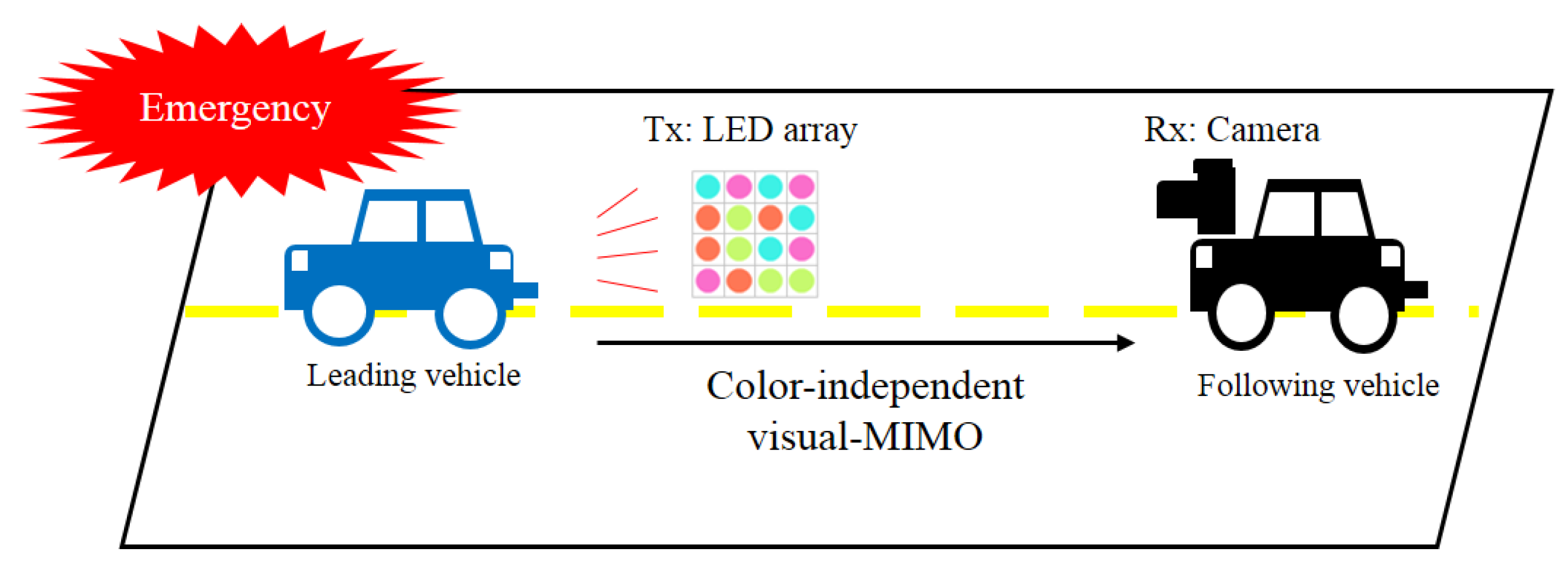

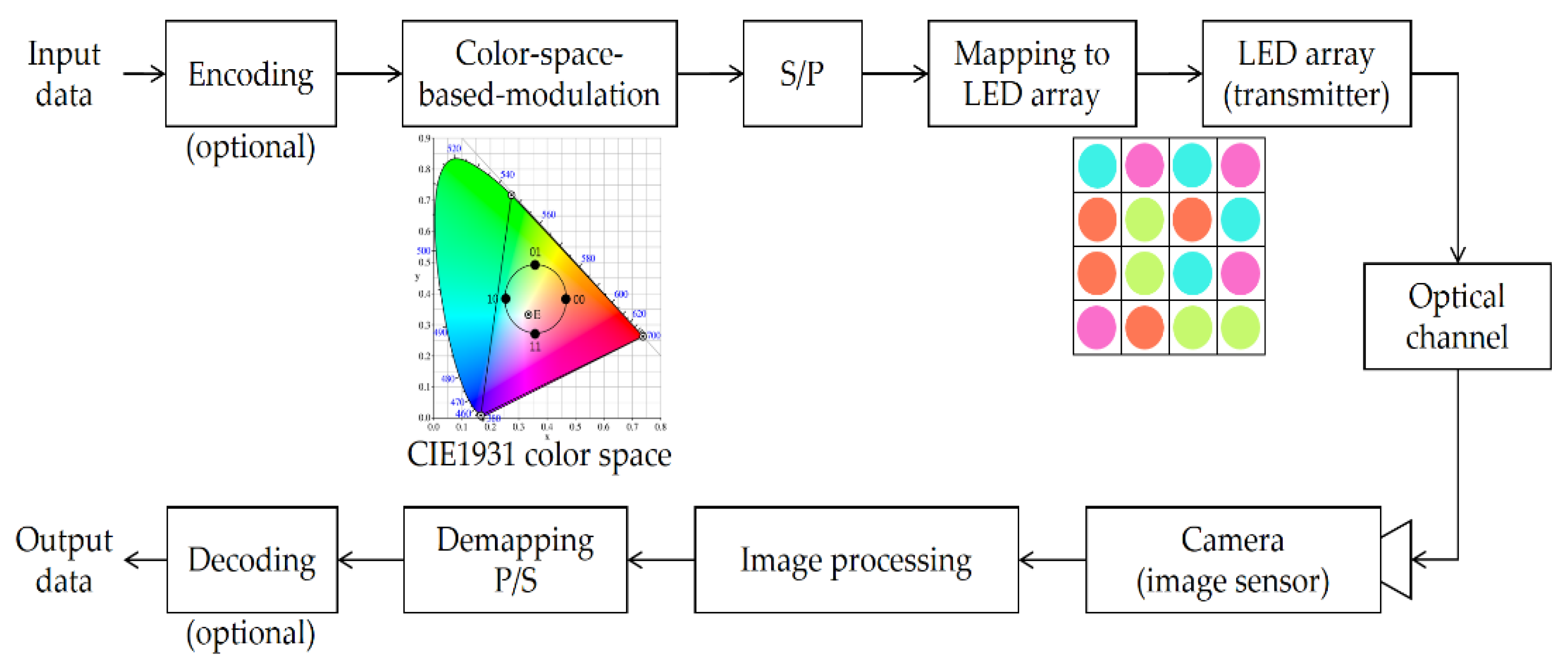
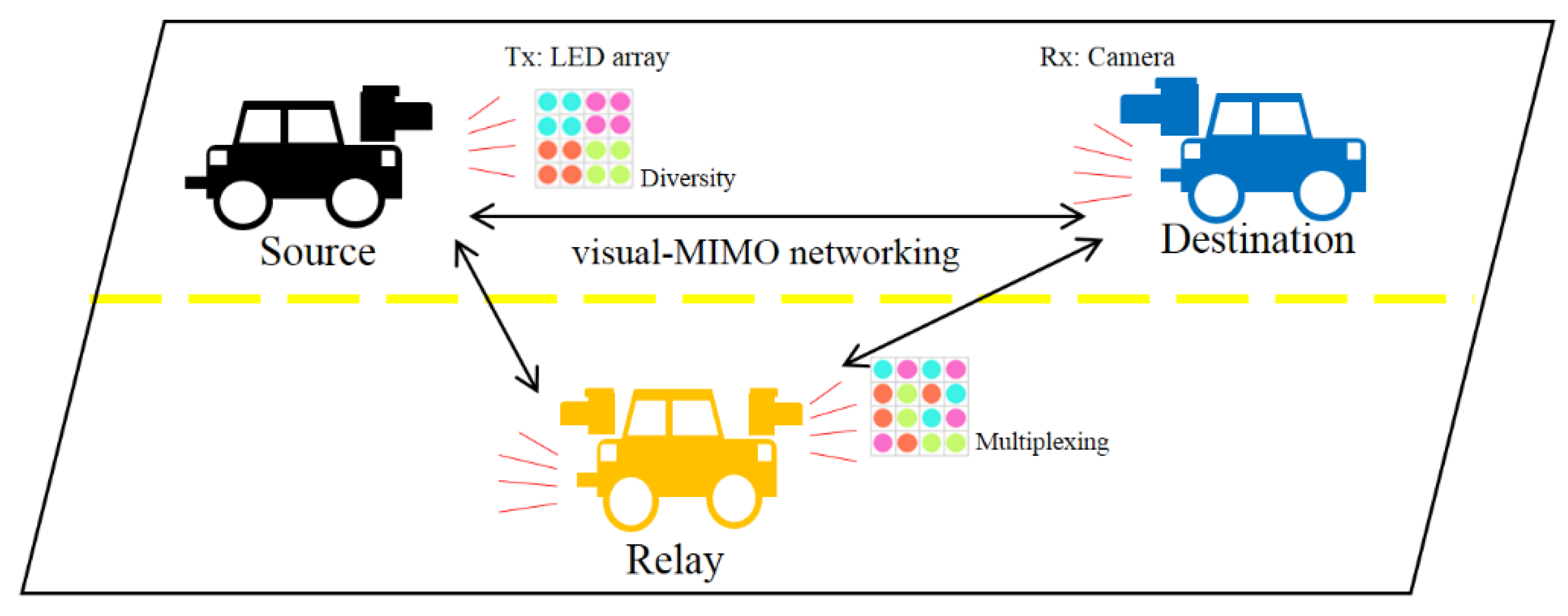
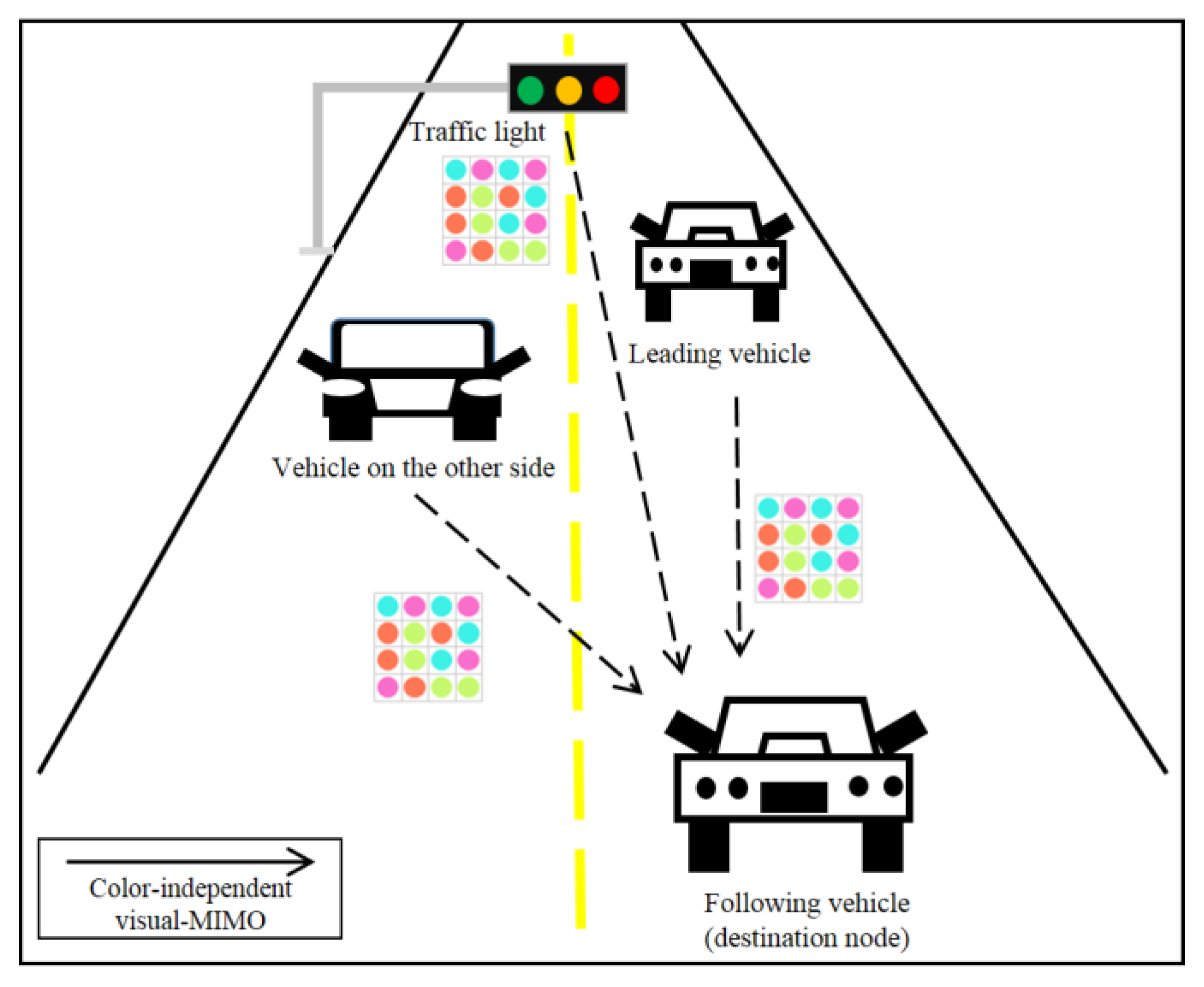
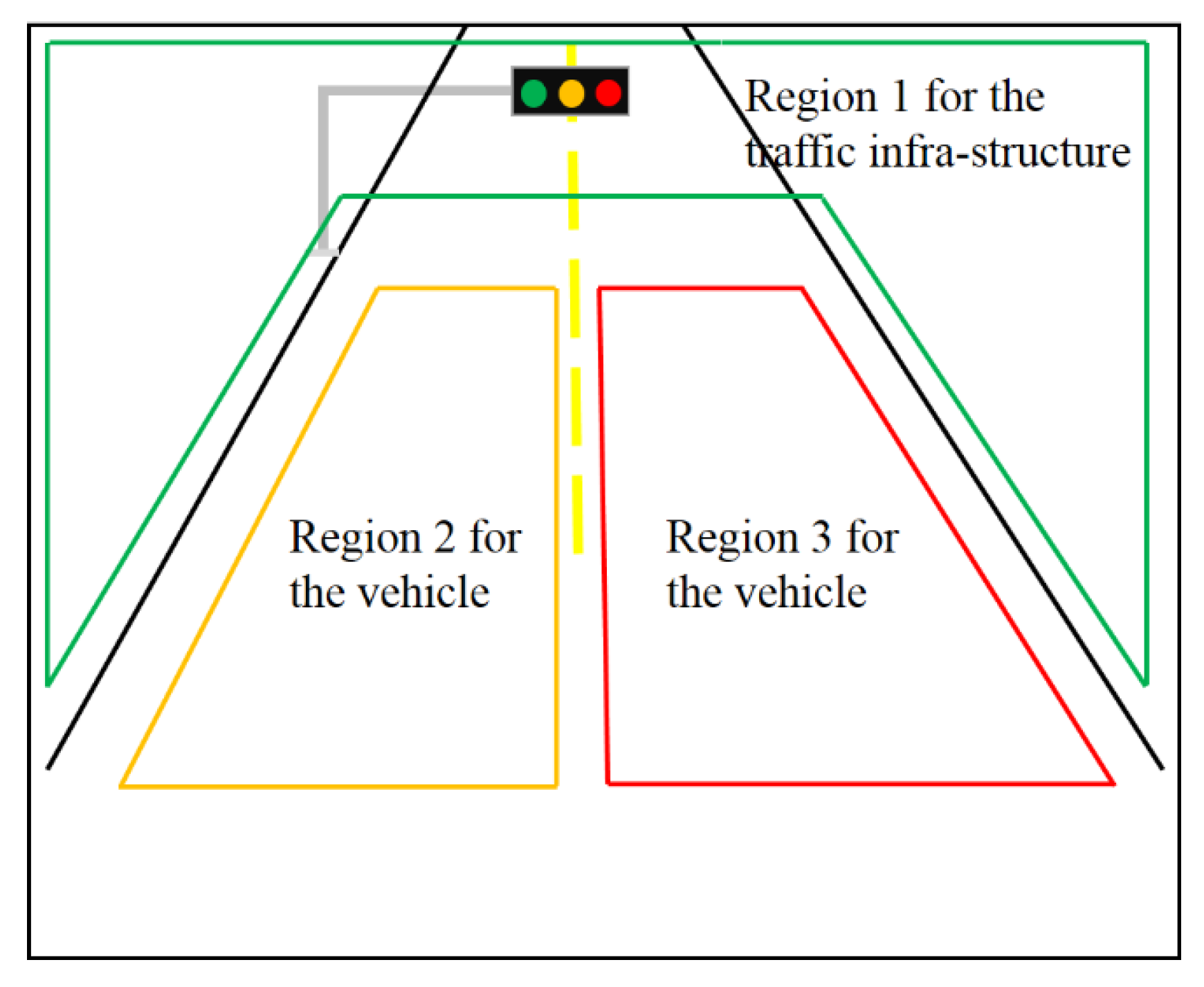
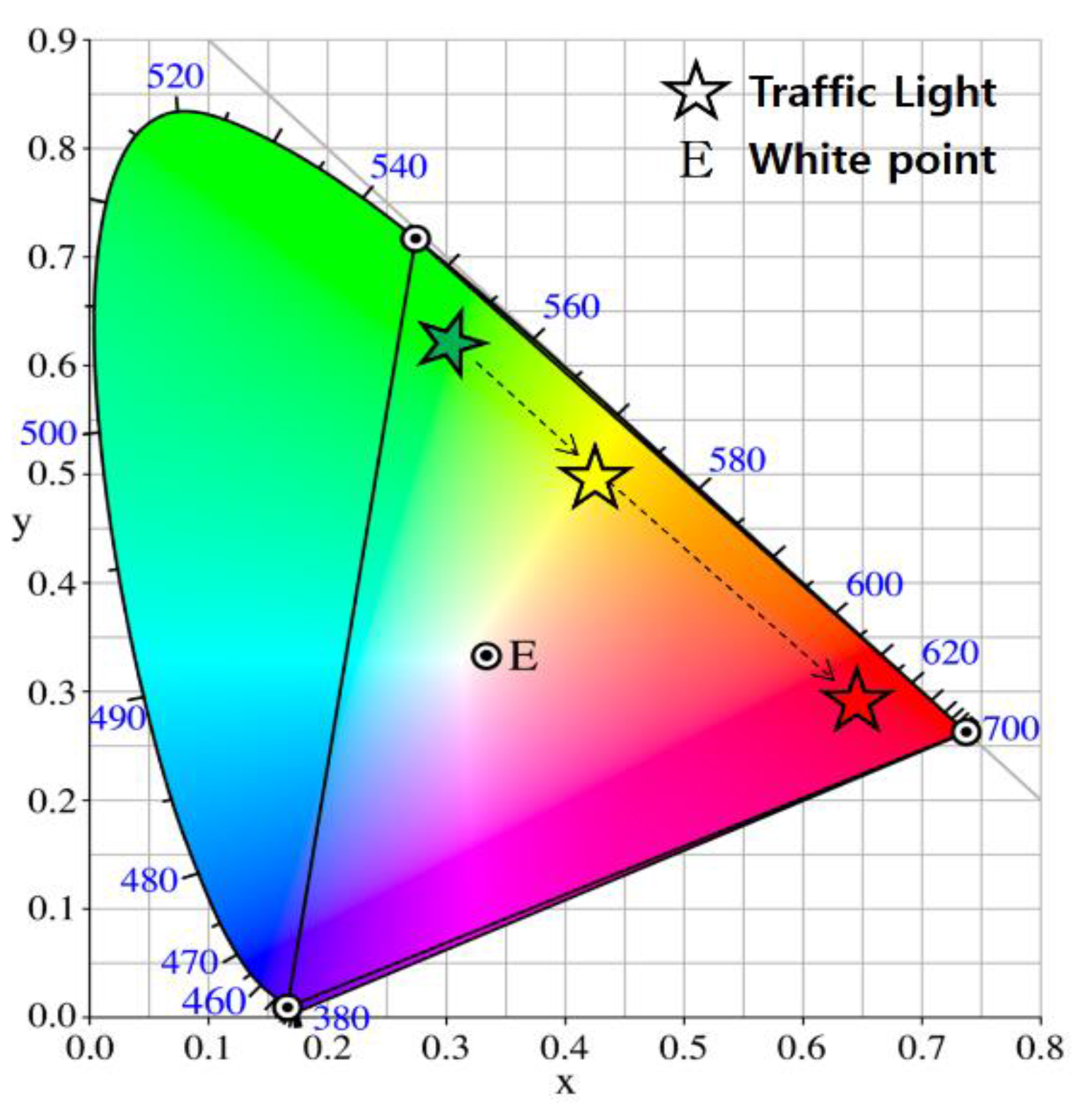

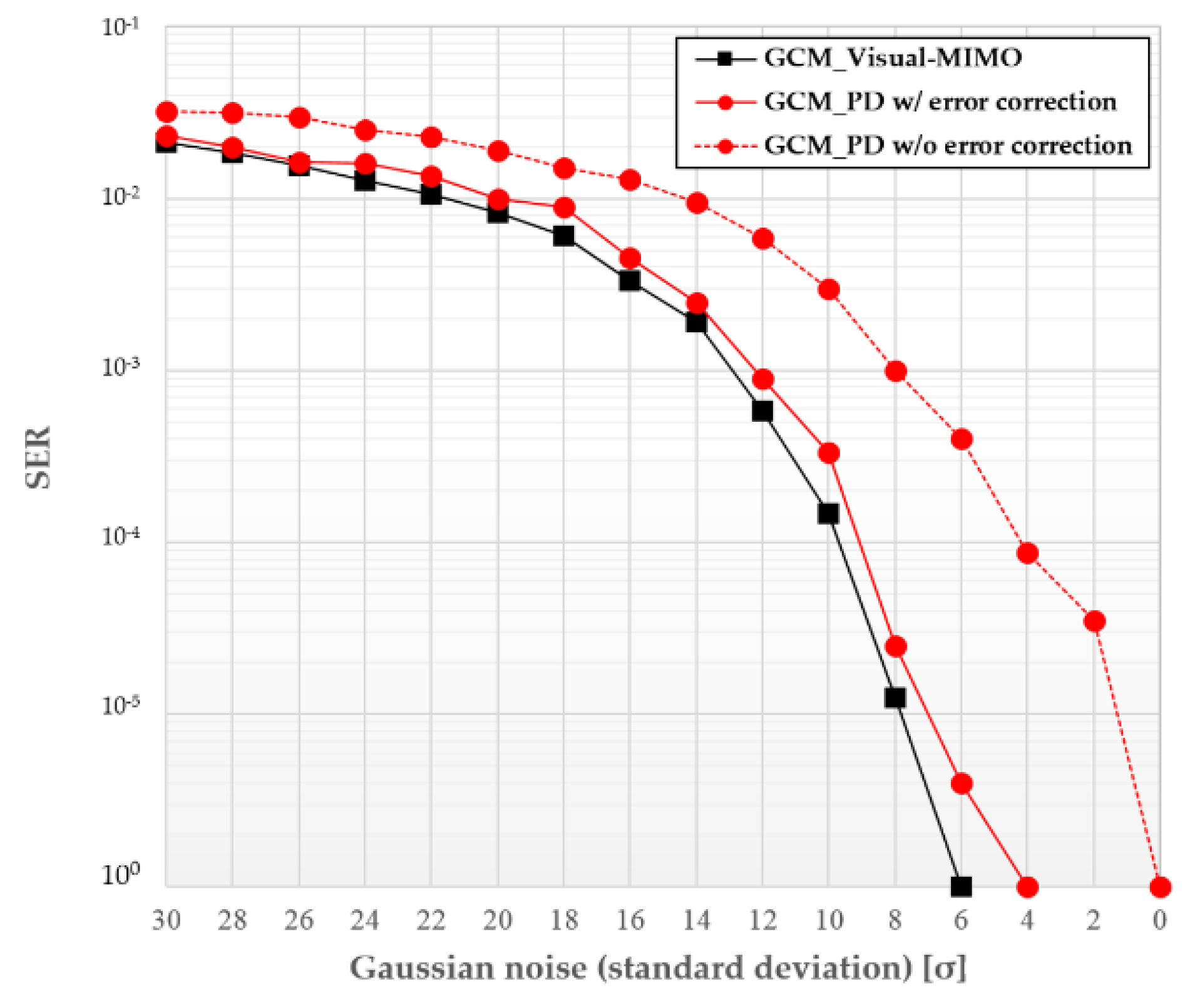
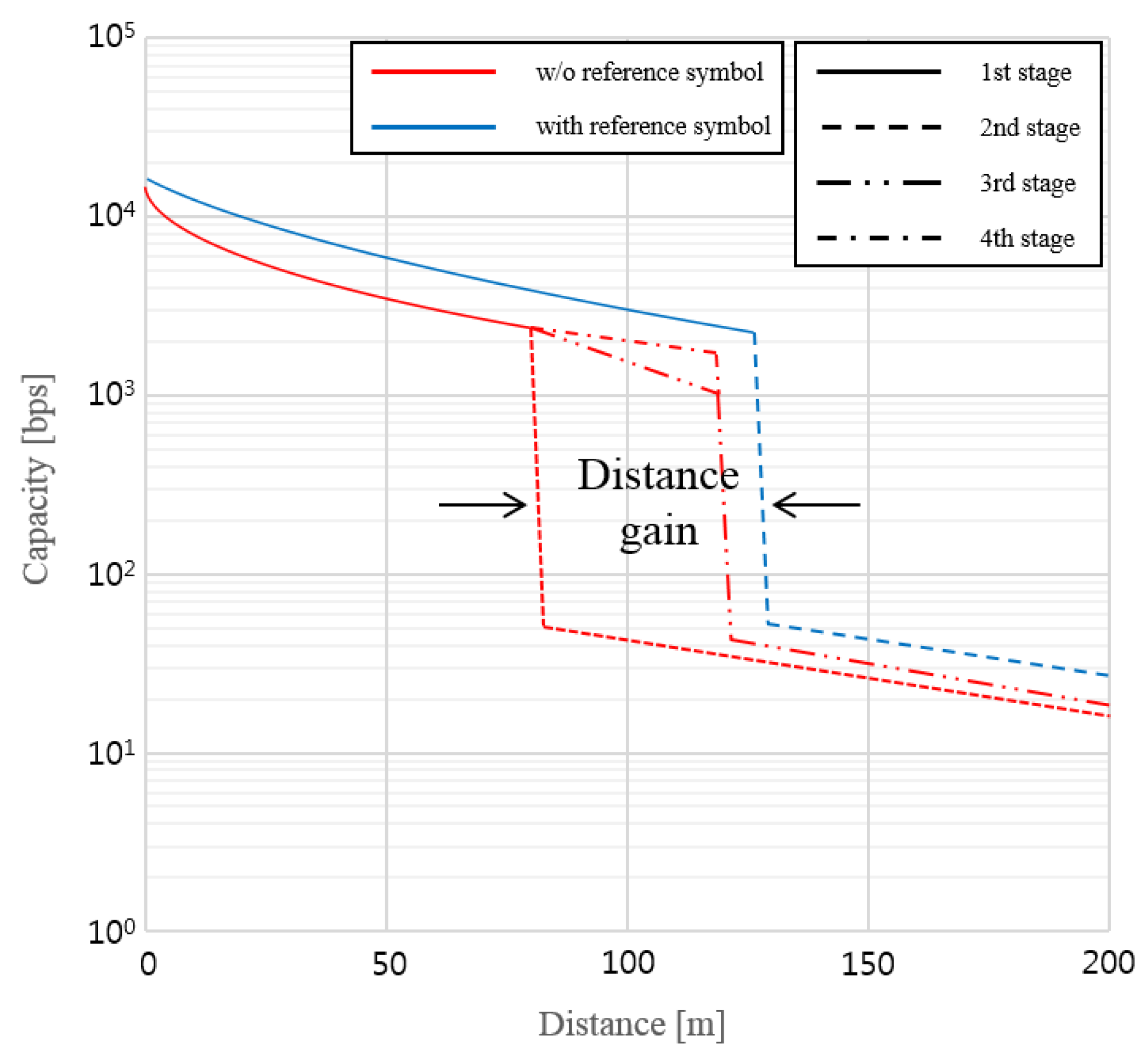
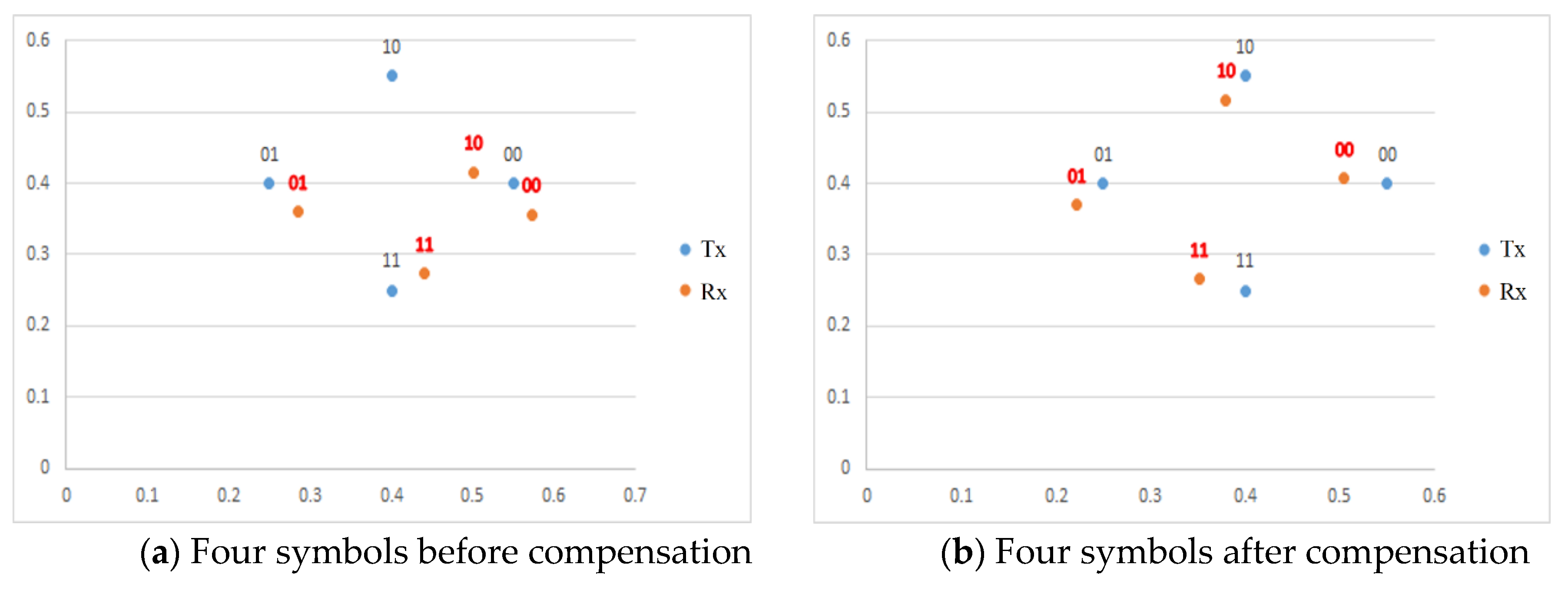
© 2016 by the authors; licensee MDPI, Basel, Switzerland. This article is an open access article distributed under the terms and conditions of the Creative Commons Attribution (CC-BY) license (http://creativecommons.org/licenses/by/4.0/).
Share and Cite
Kim, J.-E.; Kim, J.-W.; Park, Y.; Kim, K.-D.
Color-Space-Based Visual-MIMO for V2X Communication
. Sensors 2016, 16, 591.
https://doi.org/10.3390/s16040591
Kim J-E, Kim J-W, Park Y, Kim K-D.
Color-Space-Based Visual-MIMO for V2X Communication
. Sensors. 2016; 16(4):591.
https://doi.org/10.3390/s16040591
Kim, Jai-Eun, Ji-Won Kim, Youngil Park, and Ki-Doo Kim.
2016. "Color-Space-Based Visual-MIMO for V2X Communication
" Sensors 16, no. 4: 591.
https://doi.org/10.3390/s16040591







